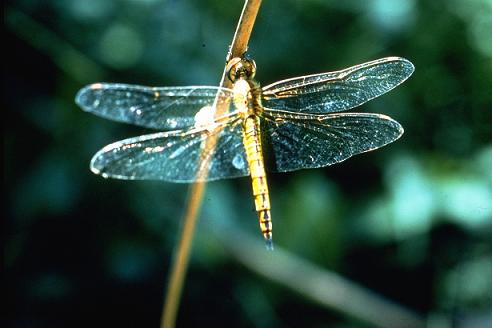
 |
|
|
|---|
Animals come in many shapes and sizes. They live throughout the world. Animals walk or crawl on land and dig through the soil. They swim in the water and fly through the air. They even live inside the bodies of other animals. Bats, dogs, horses, kangaroos, and moles are all animals. So are butterflies, frogs, jellyfish, pigeons, sharks, snakes, and worms.
Most kinds of animals are less than 1 inch (2.5 centimeters) long. Many are so tiny that they can be seen only with a microscope. The largest animal is the blue whale. It is about as long as five elephants in a row. Animals are not the only kind of living things. Scientists divide living things into five main kingdoms (groups)-animals, plants, fungi, protists, and prokaryotes. Fungi include molds, mushrooms, and yeasts. Protists, such as amebas, cannot be seen without a microscope. Prokaryotes, which include bacteria and certain algae, are some of the smallest, simplest forms of life.
Animals are different from other living things in many ways. For example, the bodies of animals are made up of many cells. But the bodies of prokaryotes and most protists have only one cell. Like animals, plants and fungi also are made up of many cells. However, animals can move around. Most plants and fungi are held to one place in the soil by roots or rootlike structures. For a more complete discussion of the differences between the members of the five kingdoms.
No one knows exactly how many species (kinds) of animals there are. So far, scientists have classified (grouped) and named more than 1 1/2 million kinds of animals. Over half of these are types of insects. Many new species are discovered each year. Scientists believe there may be from 2 million to as many as 50 million kinds of animals alive today. Many other kinds of animals used to live on Earth but have died out. They include dinosaurs and dodos.
Animals and the web of life. Living things depend on one another. They are connected in what is sometimes called the web of life. Plants capture the energy from sunlight and use it to make roots, stems, leaves, flowers, and fruits. Animals eat the plants, or they eat other animals that feed on the plants.

When animals die, their bodies decay and release materials that help fertilize the soil for plants. Animals and plants are also connected in other ways. When animals breathe, they take in oxygen from the air and give off carbon dioxide. Green plants take in carbon dioxide and give off oxygen in a food-making process called photosynthesis. Many plants with flowers need insects or birds to carry their pollen from plant to plant. Without this transfer of pollen, these plants are not able to reproduce (create new individuals of their own kind). Some seeds are prickly and cling to the fur or feathers of animals.
When the animals move from place to place, they take the seeds with them. In this way, the seeds get dropped in new areas where they can grow into plants. The web of life relies on balance among its parts. A change in one part may mean disaster for others. For example, if all the trees in an area are cut down, then many animals that depend on them will die. For more information on how living things are linked.
Animals and people. Animals have provided people with food and clothing since prehistoric times. Without animals, people would not have such things as meat, honey, eggs, wool, leather, or silk. At least 10,000 years ago, people began domesticating (taming) animals. Some of these animals provide food and clothing. For example, cattle supply meat, milk, and leather. Chickens lay eggs. Sheep provide wool and meat. Some domesticated animals help people work. Water buffaloes pull plows in Asian rice fields. Horses and camels carry people from one place to another. At first, people kept cats in their houses to catch rats and mice. They raised dogs to help them hunt.

Today, cats and dogs are kept largely as pets. Certain insects are useful to people. Bees make honey, which people harvest for food. Bees also pollinate many food crops, including fruits and vegetables. Silk comes from fiber made by silkworms. Some animals harm people. On rare occasions, crocodiles, lions, and tigers attack and kill people. So do grizzly bears and polar bears. Sharks sometimes kill and eat human beings. Bites from such poisonous snakes as rattlesnakes and cobras can cause death. The black widow spider has a poison that makes people extremely sick. Some animals pass diseases along from person to person. Certain mosquitoes transmit malaria and yellow fever. Some ticks carry the bacteria that cause Lyme disease and Rocky Mountain spotted fever. Some animals cause disease themselves. Worms called flukes, which live in human organs, can cause schistosomiasis. This disease infects millions of people in many African, Asian, and Latin-American countries. |
|---|
|
||||||||||||
|---|---|---|---|---|---|---|---|---|---|---|---|---|
|
|
||||||||||||